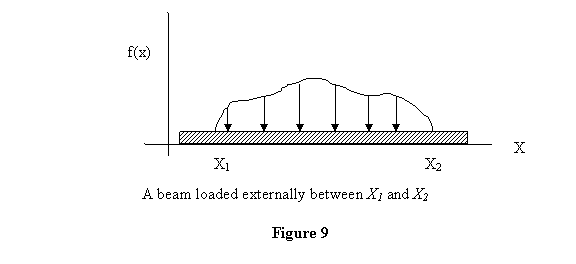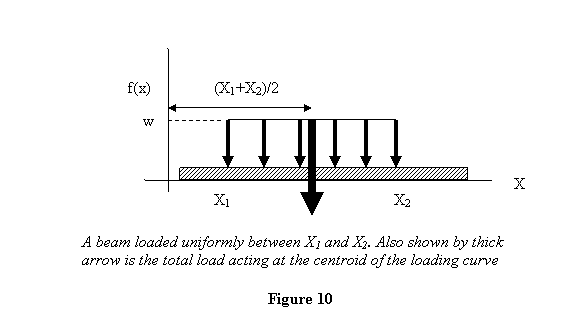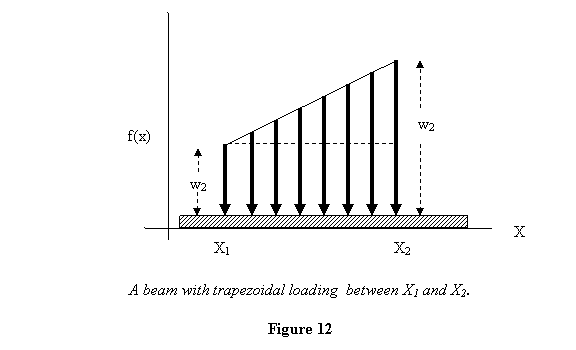Application
to mechanics: As the first simple application
of the methods developed let us consider beams which
are externally loaded. We consider only those situations
where beams are supported externally so that the
external reactions can be calculated on the basis
of statics alone. As in the case of trusses, such
beams are called statically determinate beams. Now
one such beam is loaded externally between X1 and X2 as
shown in figure 9.

In the figure the function f(x) is the load intensity
which is equal to load per unit length. Thus force over
a length dx is given by dF = f(x) dx .
The total load R therefore is

Next question we ask is where is the total load located?
This is determined by finding the Moment (torque) created
by the load, which is given by

Thus the location of the load is given by the centroid
of the area formed by the load curve and the beam, taking
beam as the x-axis. Let us now take some examples.
Uniform loading: This is shown in
figure 10 along with the total load R acting
at the centroid of the loading intensity curve. The
uniform load intensity is w .

The total load in this case is  and
the load acts at the centroid and
the load acts at the centroid

Triangular loading : This is shown
in figure 11 along with the total load R acting
at the centroid of the loading intensity curve. The
height of the triangle is w .

In this case the total load is  and
the load acts at the centroid of the triangle. Recall
that for a triangle and
the load acts at the centroid of the triangle. Recall
that for a triangle  from
the lower left vertex (figure 4) and in the present
case from
the lower left vertex (figure 4) and in the present
case  .
Therefore the centroid is at .
Therefore the centroid is at

I will leave the case of trapezoidal loading (shown
in figure 12) for you to work out. You may wish to
consider this loading as made up of two different
ones: the lower one a rectangular and the upper one
a triangular loading.

|